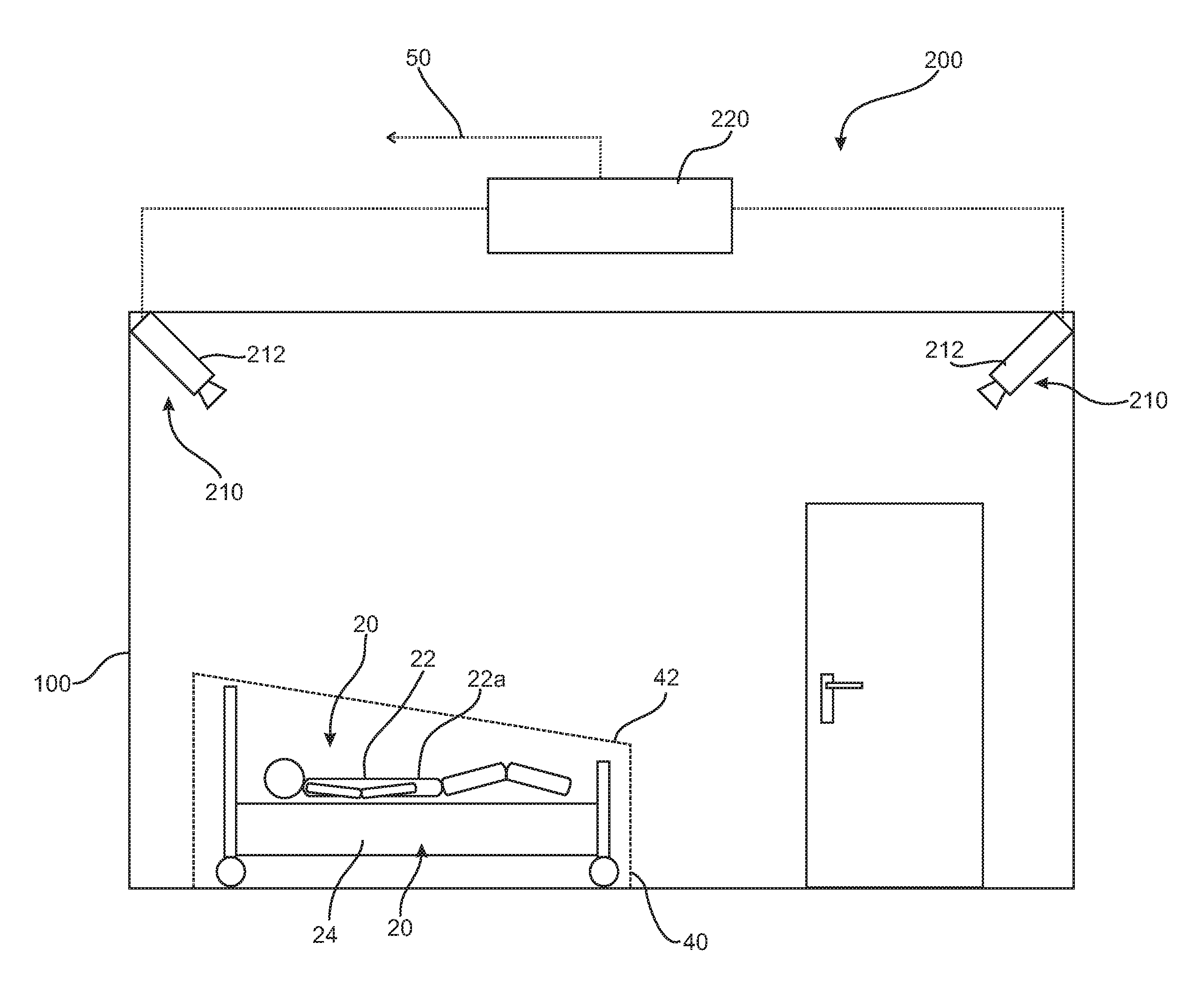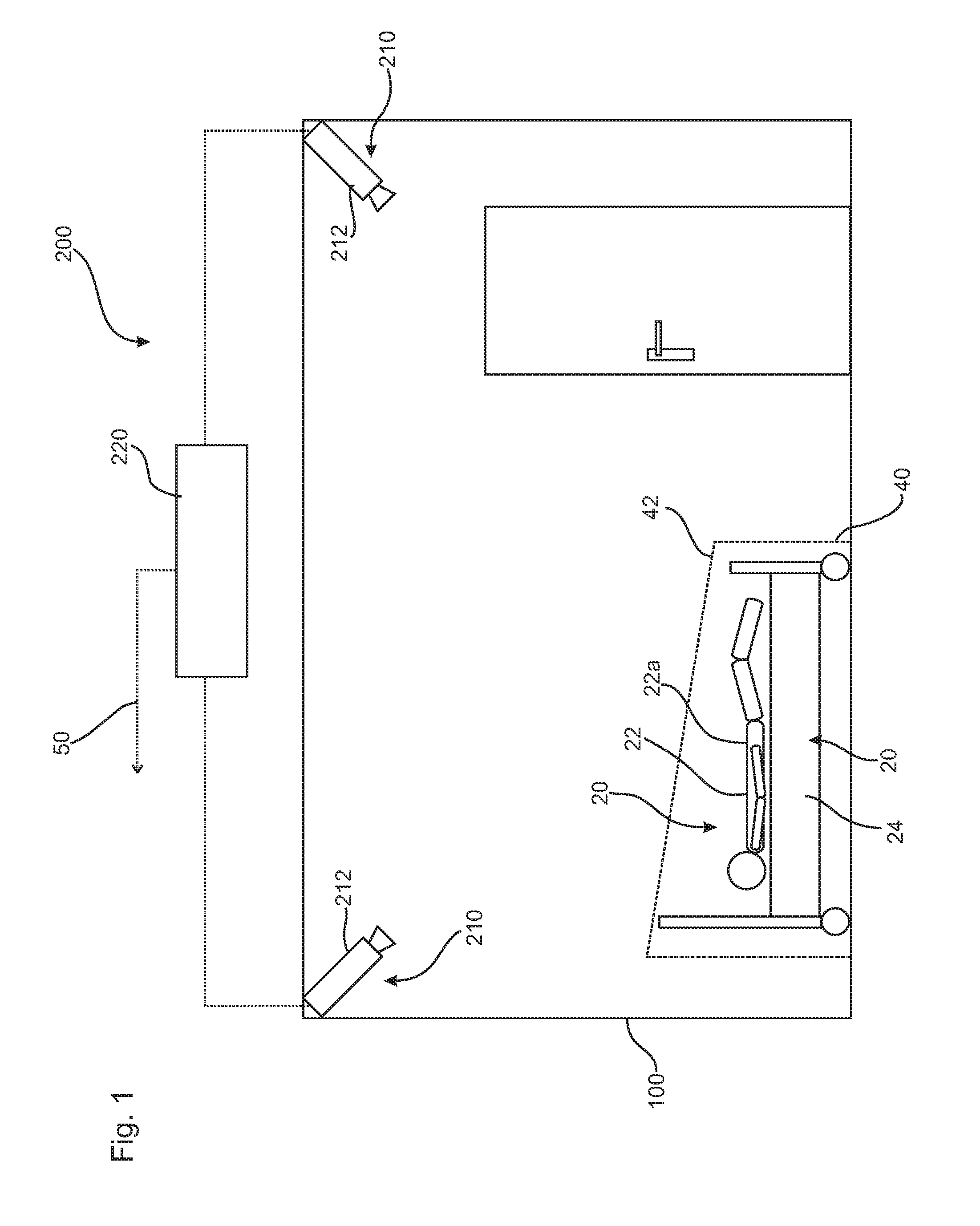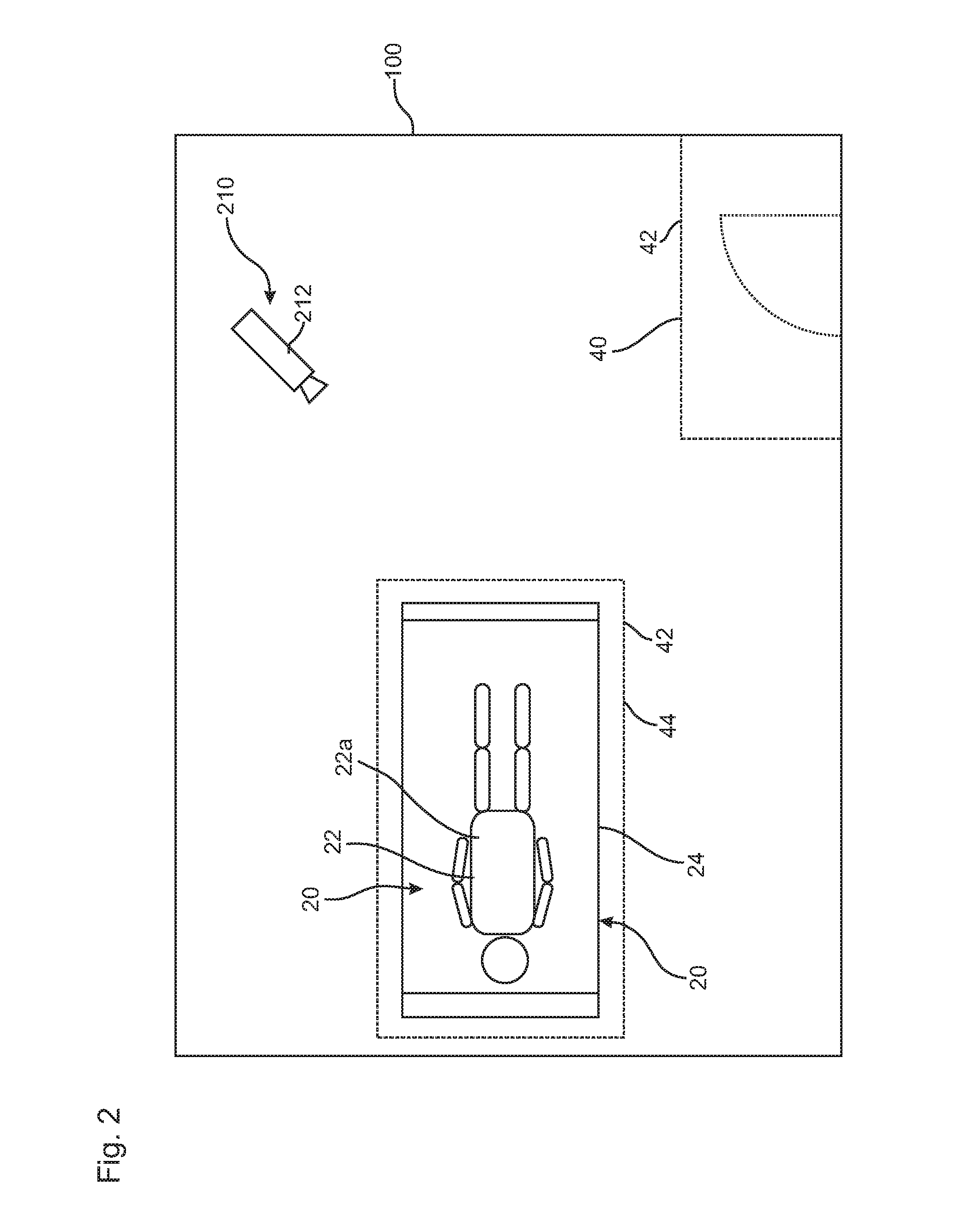Method for monitoring a patient within a medical monitoring area
a monitoring area and patient technology, applied in the field of monitoring a patient within a medical monitoring area, can solve the problems of patient injury, patient deterioration, and patients who are classified as bedridden, and achieve the effects of detecting the quality of sedation even more accurately, improving monitoring, and reducing activity
- Summary
- Abstract
- Description
- Claims
- Application Information
AI Technical Summary
Benefits of technology
Problems solved by technology
Method used
Image
Examples
Embodiment Construction
[0082]FIGS. 1 and 2 schematically show a monitoring area 100 in the form of a patient room. A monitoring system 200 with a control unit 220 for carrying out a method according to the present invention can be clearly seen. The monitoring system 200 is equipped, further, with a depth camera device 210 with two depth cameras 212 each. Depending on the monitoring functionalities switched on, a great variety of alarms 50 can be triggered by the control unit 220, The alarm may be transmitted, e.g., to an emergency call system of a pager of a physician or into a monitoring room of a hospital. Storage for documentation purposes or for transmission to an IT system of the hospital is also conceivable.
[0083]As can be clearly seen in FIG. 1, an object 20 in the form of a bed 24 is arranged within the monitoring area 100. An object 20 in the form of a person 22 is located within the bed 24. This person 22 has gotten into the bed or was laid into the bed or was moved with the bed into the room an...
PUM
 Login to View More
Login to View More Abstract
Description
Claims
Application Information
 Login to View More
Login to View More - R&D
- Intellectual Property
- Life Sciences
- Materials
- Tech Scout
- Unparalleled Data Quality
- Higher Quality Content
- 60% Fewer Hallucinations
Browse by: Latest US Patents, China's latest patents, Technical Efficacy Thesaurus, Application Domain, Technology Topic, Popular Technical Reports.
© 2025 PatSnap. All rights reserved.Legal|Privacy policy|Modern Slavery Act Transparency Statement|Sitemap|About US| Contact US: help@patsnap.com



